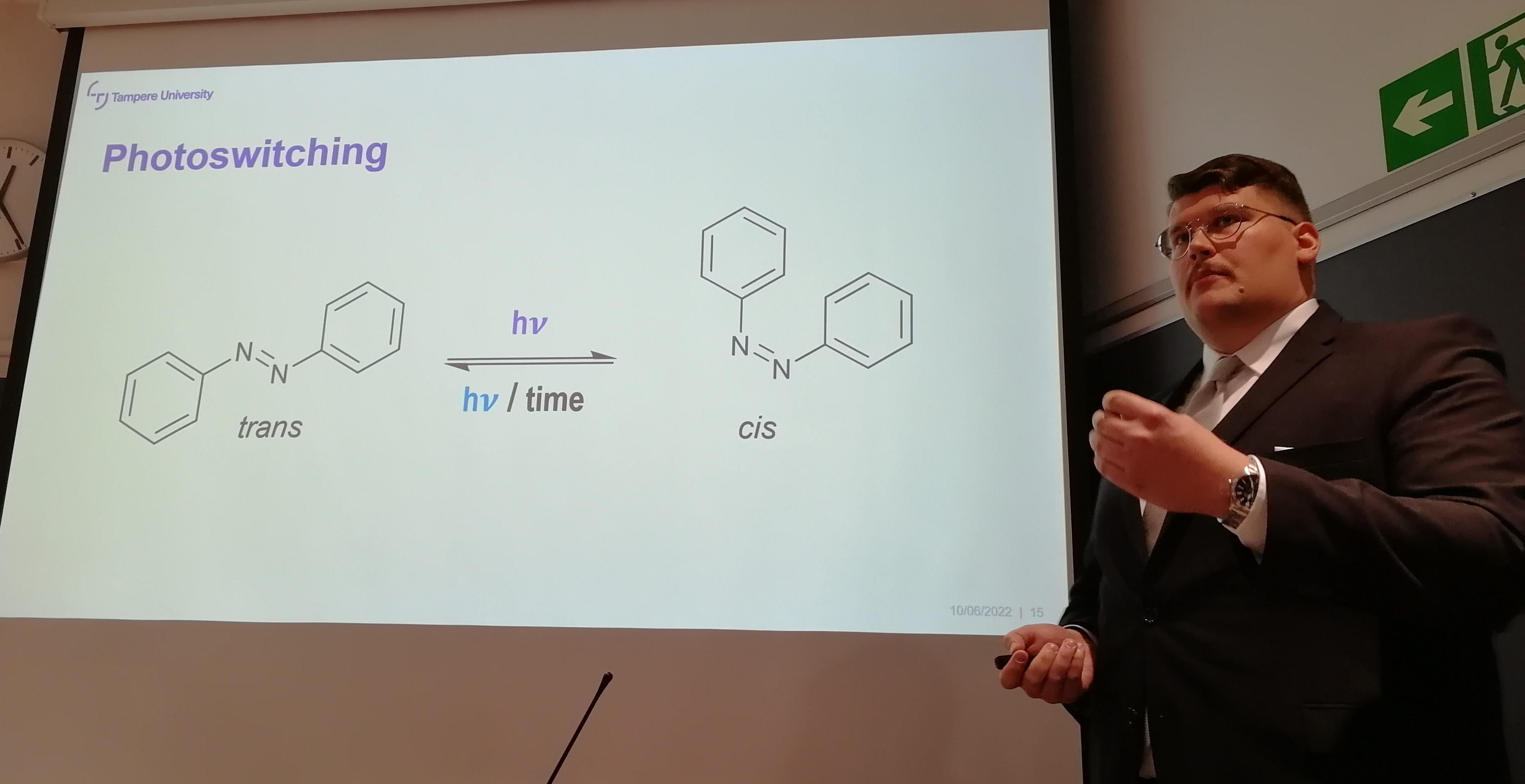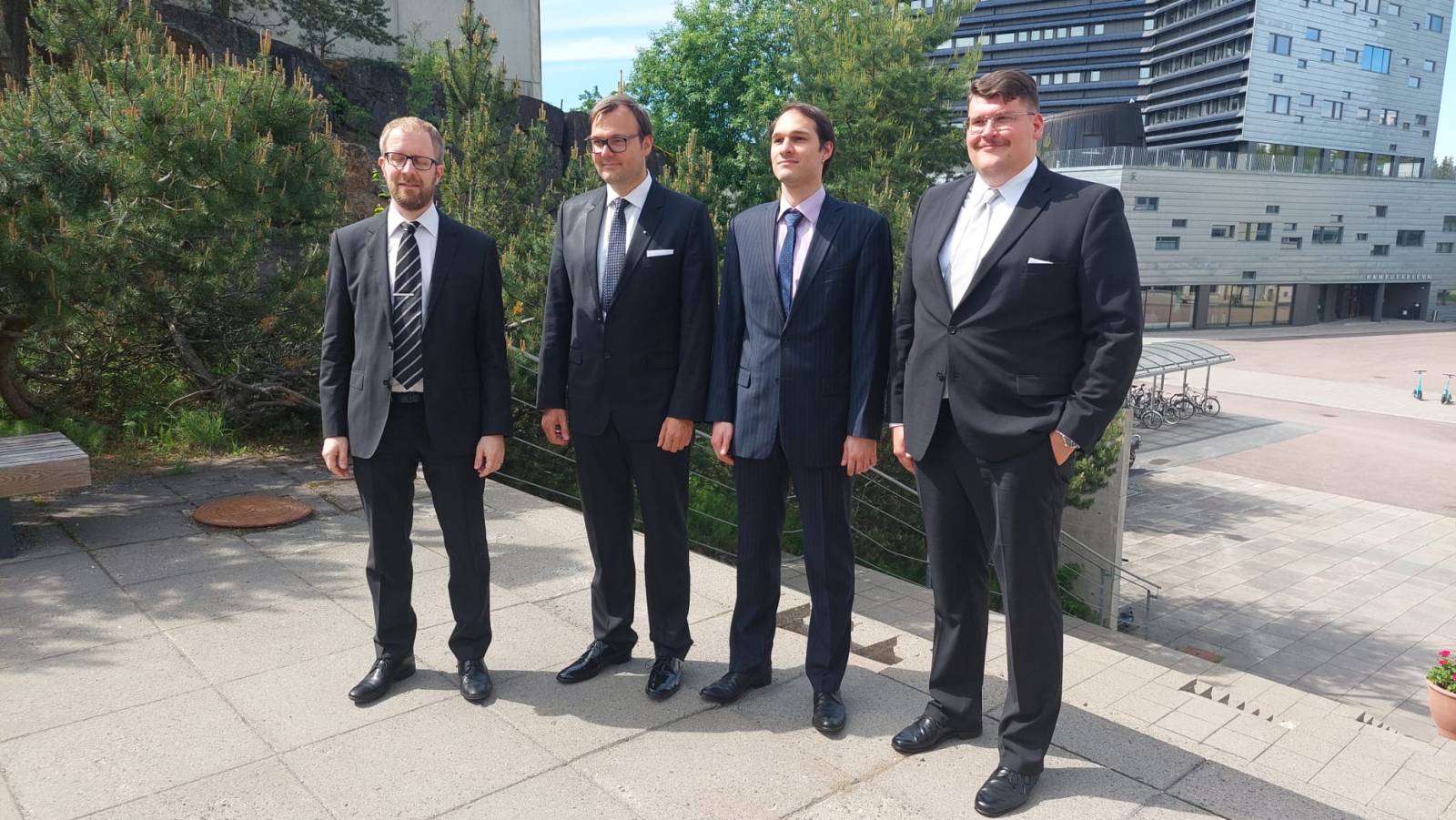Molecules can be excited indirectly by triplet energy transfer, which can be utilized in photon upconversion and photoswitching. M.Sc. (Tech) Jussi Isokuortti states in his doctoral dissertation that boosting the efficiency of these processes requires thorough studies into their thermodynamics and properties of the involved molecules. The potential applications can be found, for example, in solar energy production or medicine.
Many light involving technologies are based on phenomena that involve so-called triplet states. Typically, triplet states have been regarded as harmful because they can for example be “dark”, i.e., non-emissive, or react with oxygen and therefore be damaging to the system.
“Triplet states have been thought to be curiosities or out-right deleterious. These attitudes have now started to change as more knowledge has been uncovered on how to control and utilize them. For example, the organic LEDs in cell phone displays or photodynamic therapy of cancer exploit triplet states,” Jussi Isokuortti illuminates.
One of the key properties of triplet states is their ability to transfer between molecules. This triplet energy transfer can be used to excite molecules indirectly by using so-called photosensitizers.
“Photosensitizers are dye molecules that upon absorption of light can yield triplet excited states with high probability. These triplet excited states can then be transferred to molecules that otherwise would not generate triplet states,” Isokuortti explains.
The indirect excitation of triplet states can be harnessed for example in synthesis of new molecules by photocatalysis or, like in Isokuortti’s dissertation, for photon upconversion and photoswitching. In photon upconversion the wavelength of the exciting light is converted to shorter wavelength. In other words, the red light absorbed by the system is transformed into blue emission. This can be used in 3D printing with light, drug release systems or to improve the efficiency of solar cells, to name a few applications. Photoswitching on the other hand means altering the structure and thus properties, which enables a plethora of applications ranging from solar energy storage and robotics to medicine. The indirect excitation of photoswitches allows excitation of these systems with longer wavelength light. This especially important for the medical applications as only red or infrared light can penetrate skin.
 “In my thesis I investigated how the properties of excitation energy donor i.e. photosensitizers and acceptors influence the thermodynamics of triplet energy transfer. This knowledge was then applied into making more efficient photon upconversion systems and extending the excitation wavelength of photoswitching into the infrared range, Isokuortti summarizes.
“In my thesis I investigated how the properties of excitation energy donor i.e. photosensitizers and acceptors influence the thermodynamics of triplet energy transfer. This knowledge was then applied into making more efficient photon upconversion systems and extending the excitation wavelength of photoswitching into the infrared range, Isokuortti summarizes.
Hyvinkää born and raised Jussi Isokuortti began his university studies aiming to become a math and science teacher until several summer internships in the lab made him choose research. After graduating as M. Sc. (Tech.), he started the doctoral studies in the Supramolecular chemistry of Bio- and Nanomaterials team led by Professor Timo Laaksonen. He will continue photochemistry research at the University of Texas at Austin after receiving his doctoral hat.
The dissertation is available online at: http://urn.fi/URN:ISBN:978-952-03-2464-3

